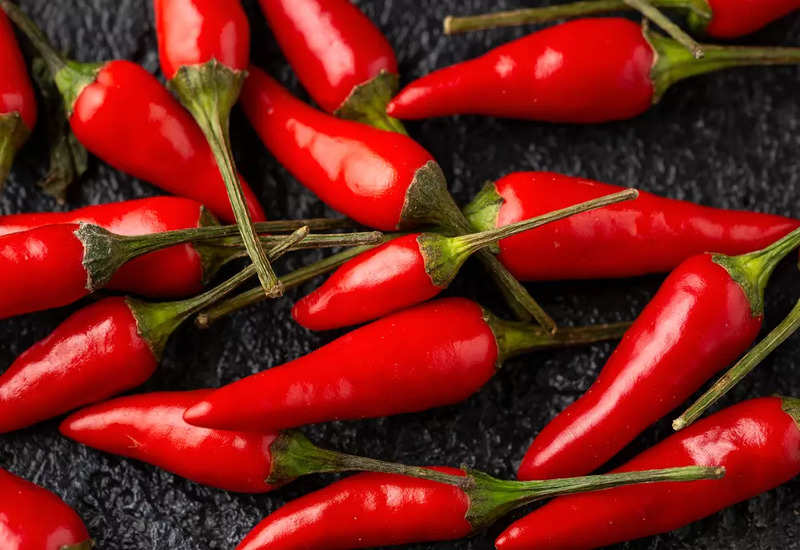It is believed that the smaller the
Apart from being spicy, it packs a great nutritional punch. The tiny chilli comes in colours of white, dark green and red.
Health Benefits of Bird’s Eye Chili
Like many of its bigger cousins,
Some health benefits of bird’s eye chilli:
- Has microbial and anti-fungal properties
- Boosts appetite
- Regulates cholesterol and blood sugar
- Increases metabolism
2. Aids in weight loss: Bird’s eye chilli contains capsaicinoids that could help in reducing overall calorie intake, boosting metabolism, and torching body fat. It can also improve gut health, which can eventually lead to weight loss.
3. Anti-bacterial properties: As bird’s eye chilli is a medicinal plant, it has anti-microbial, anti-fungal, and anti-bacterial properties. This prevents blood clots, reduces the risk of heart diseases and tuberculosis. It also acts as a great pain reliever.
Nutritional Composition of Bird’s Eye Chili
Nutritional facts for 45 grams of bird’s eye chilli.
| NUTRITIONAL FACT | MEASURE |
| Calories | 18 |
| Total fat | 0.2 g |
| Cholesterol | 0 mg |
| Sodium | 4 mg |
| Potassium | 145 mg |
| Total carbohydrates | 4 g |
| Dietary fibre | 0.7 g |
| Sugars | 2.4 g |
| Protein | 0.8 g |
| Vitamin A | 2% |
| Vitamin E | 2% |
| Niacin | 4% |
How to use
To say that bird's eye chilli is spicy is an understatement. This tiny little pepper packs 100,000 Scovilles of heat. The Thai variant is at 225,000, according to Chili-Plant.com. So it's important that you handle the chilli with care.
In
Disclaimer:
“The recipes, food, its nutritional value or any other information are developed/shared by expert professionals as per their skill levels. The website shall not be responsible for any consequences arising as a result of using or following any information given in this video/article. Viewers discretion advised.”
